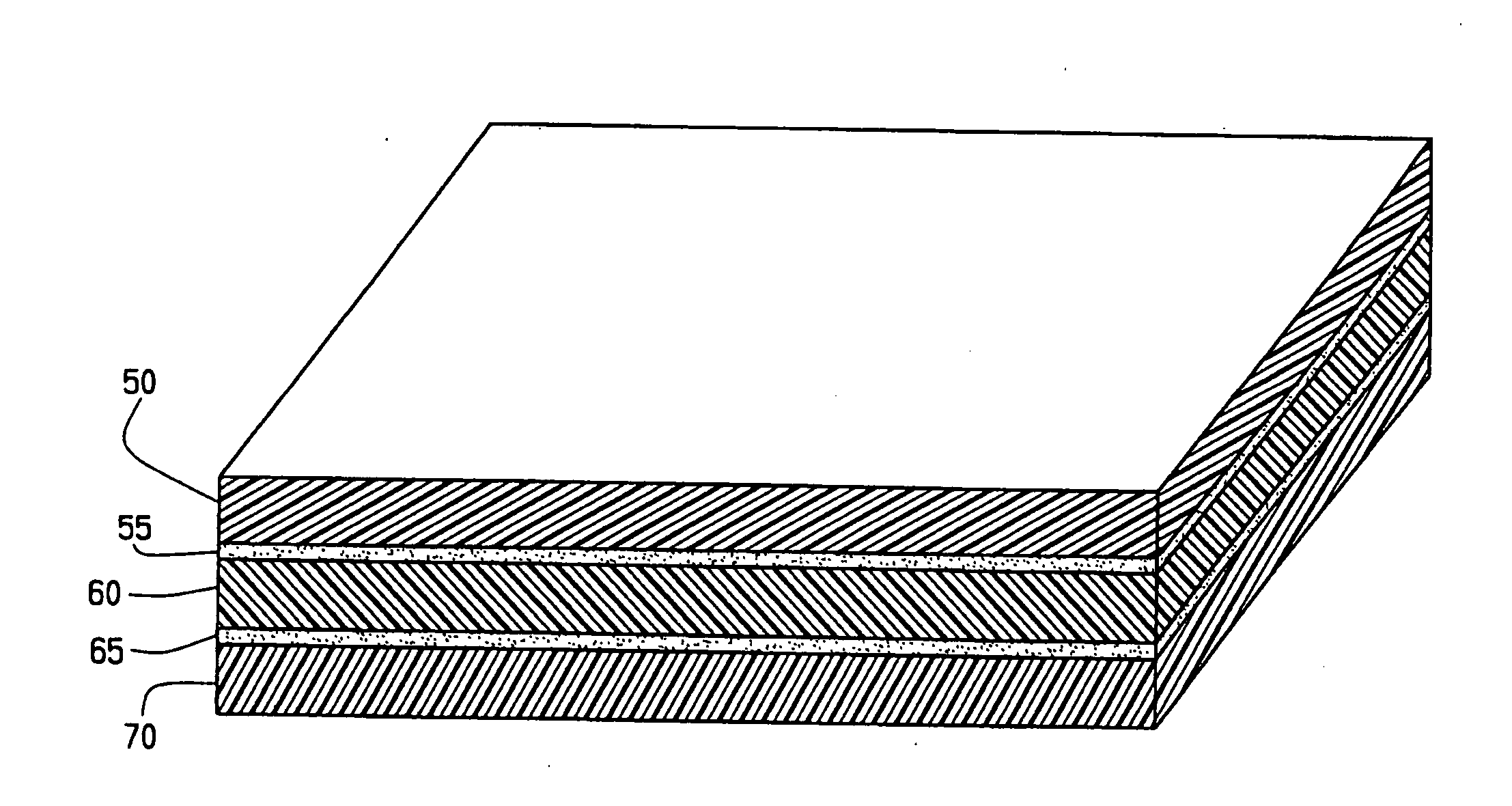Multilaminar tag material
a multi-laminar, tag technology, applied in the field of tag materials, can solve the problems that the combination of these types of components formulated into tags has not been available to any improvement, and achieve the effects of enhancing the durability of tags during their application and use, easy to form, and readily available and readabl
- Summary
- Abstract
- Description
- Claims
- Application Information
AI Technical Summary
Benefits of technology
Problems solved by technology
Method used
Image
Examples
Embodiment Construction
[0014]In referring to the drawings, and in particular FIG. 1, the three layer tag of this invention is formed of material generally constructed of a top layer 50, formed of a clear polypropylene or related laminate material bonded to the emulsion side of a micro-encapsulated carbonless paper layer 60, being bonded by an adhesive 55, which paper layer 60 in turn is bonded to the uncoated side of a coated one side (C1S) paper 70. This bonding also is attained by means of adhesive 65. In referring to the drawing, the resulting construction is a laminated, two side printable tag material with both sides being printable by traditional printing methods, such as flexo, rotogravure, and the like. Additionally, a laminated micro-encapsulated side of the tag is capable of being imaged without the use of inks or dyes, by either metal stamping or embossing of the surface of the tag. This is primarily due to the presence of the carbonless paper being available for the intermediate laminate provi...
PUM
| Property | Measurement | Unit |
|---|---|---|
| durable | aaaaa | aaaaa |
| durability | aaaaa | aaaaa |
| adhesive | aaaaa | aaaaa |
Abstract
Description
Claims
Application Information
 Login to View More
Login to View More - R&D
- Intellectual Property
- Life Sciences
- Materials
- Tech Scout
- Unparalleled Data Quality
- Higher Quality Content
- 60% Fewer Hallucinations
Browse by: Latest US Patents, China's latest patents, Technical Efficacy Thesaurus, Application Domain, Technology Topic, Popular Technical Reports.
© 2025 PatSnap. All rights reserved.Legal|Privacy policy|Modern Slavery Act Transparency Statement|Sitemap|About US| Contact US: help@patsnap.com


